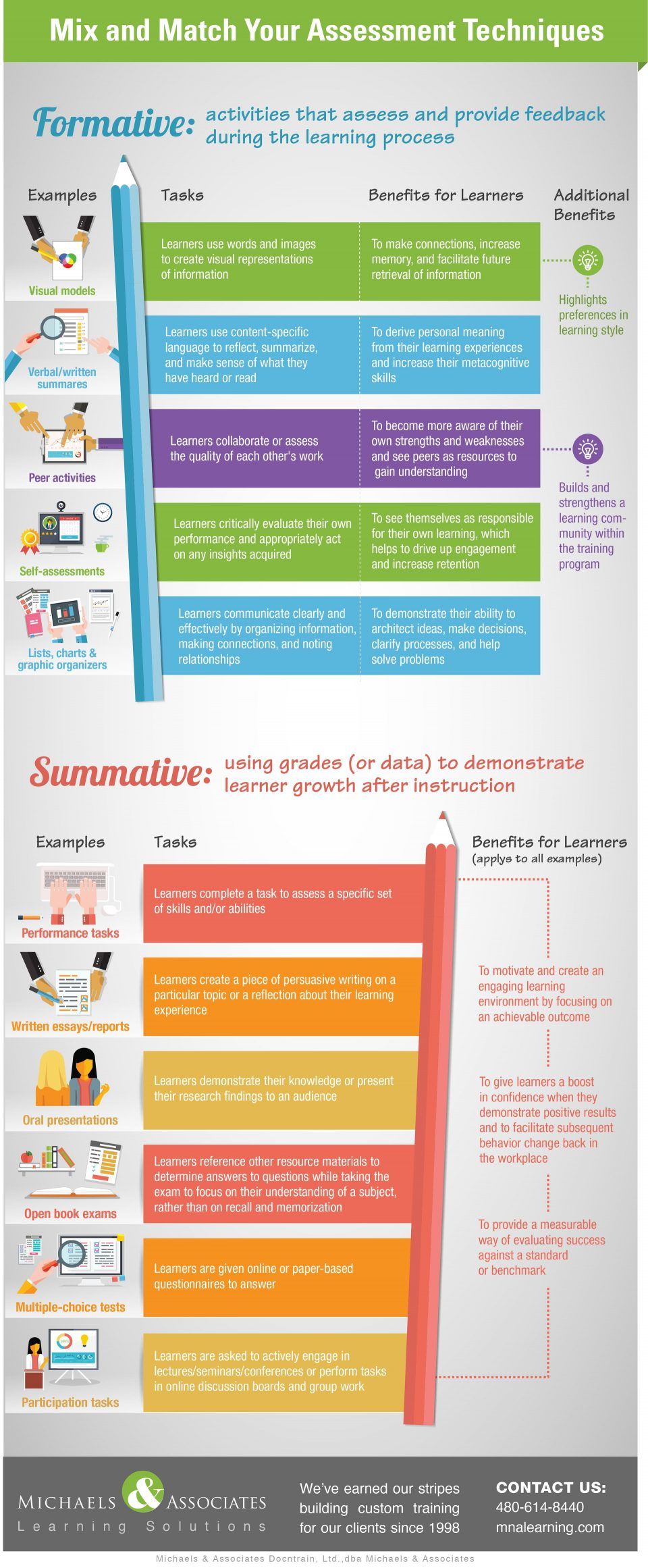Mix and Match Your Assessment Techniques to Boost Performance Infographic
How do you typically measure learning? Do you find yourself using multiple-choice tests as your go-to strategy for assessing learners?
Of course, a well-designed multiple choice test can be effective in measuring performance, but there's more to it than just grades. Many benefits can be gained by assessing while the training is underway, too.
The two approaches are formally defined as:
- Formative assessments, which are trainer or learner activities that assess and provide feedback during the learning process, and
- Summative assessments, which use grades (or quantifiable data) to demonstrate learner growth after instruction
Ready to shake things up and give your learners a performance boost? Check out the Mix & Match Your Assessment Techniques to Boost Performance Infographic for ideas on how to mix and match assessment techniques for your next training program.
Formative Assessment Examples
- Visual models
- Verbal/written summaries
- Peer activities
- Self-assessments
- Lists-charts and graphic organizers
Smmative Assessment Examples
- Performance tasks
- Written essays/reports
- Oral presentations
- Open book exams
- Multiple choice tests
- Participation tasks
Top performing companies and their L&D teams find it most beneficial to offer both formative and summative assessments. Not only are they able to improve overall performance measurement, but they are also able to provide a fuller learning experience for their training participants.
View aslo: Blended and Online Assessment Taxonomy Infographic







You can adjust your cookie preferences here.